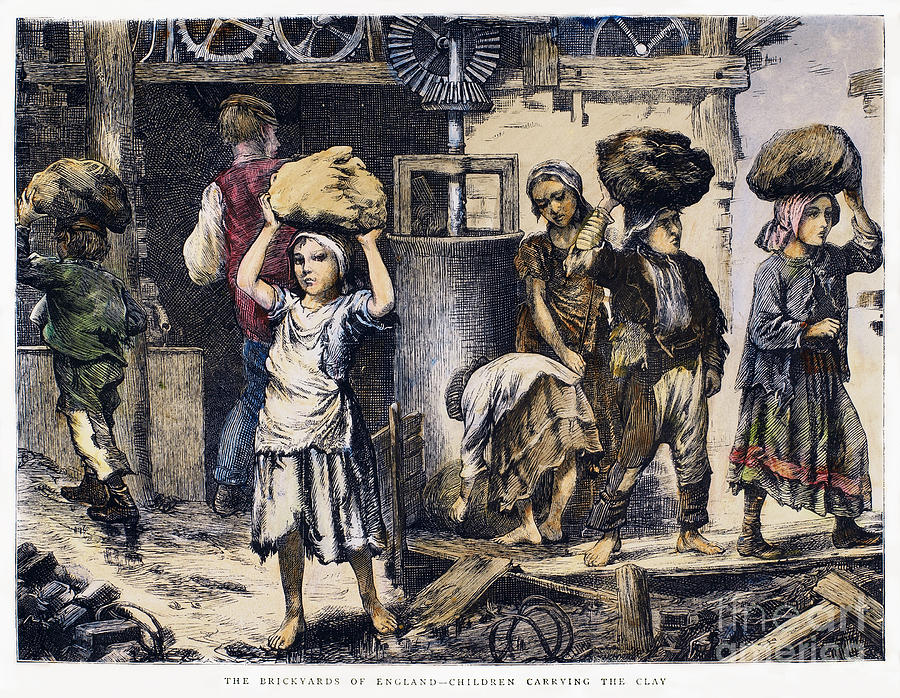Idealism posits that all reality is grounded in mental states: to be is to be perceived. It offers a potential solution to the crippling dilemma of how to explain the relation between consciousness and the physical brain. If everything is mind, there cannot be a mind-body problem. In this essay I will present Yetter-Chappell’s nontheistic idealism and defend it from a series of challenges. Finally, I will respond to the most critical objection, which contests the existence of a unity-of-consciousness relation. I conclude that Yetter-Chappell’s metaphysics is an effective solution to the mind-body problem.
Note — this essay is pretty technical/analytic. If you want to skip to the end for my comments in natural English, and the stuff about stealing vibes and the blockchain of consciousness, feel free (although it misses some background).
Groundwork
There are two key desiderata of a successful idealism: it must account for (a) how objects are sustained when we no longer perceive them, and (b) the regularity of our perceptions of reality. Our intuitions require these explanations. If we stop observing a tree, and then return to its location later, why do we regularly experience similar impressions of the tree? A nontheistic idealism cannot resort to claiming that God keeps all things in mind, ensuring that the world appears to us consistently. If a theory is able to meet these standards, it is prima facie acceptable, and it can be compared against opposing explanations.

In Yetter-Chappell’s view, reality is a “unity of consciousness” (6) where the same mental laws that structure our own experiences also bind together all experiences. For instance, my pencil exists separately from my mind, as it is also part of the phenomenal unity of reality (PUR). The PUR also binds together impressions of the pencil from every possible viewpoint. There are three relations that bind experiences together:
- Unity-of-consciousness relation: our myriad perceptions unify into a single conscious experience. I am aware of the music in my headphones and the color of the desk as aspects of one continuous conscious experience, rather than discrete experiences of two different consciousnesses.
- Objectual-unity relation: Sensations are combined into objects rather than remaining disjoint. My impressions of roughness and grayness are not separate; they are bound together into the object of a rock.
- Spatial-unity relations: Experiences occupy one shared space with a directional structure. For instance, the blue, hat-shaped part of this space is to the right of the silvery, laptop-shaped part.
These three laws bind together reality, not just my experiences. The PUR is an immense tapestry of perceptions woven together according to these laws. This phenomenal world can also behave according to the laws of physics (translated into idealist terms). These laws have a different metaphysical nature — they govern phenomenal systems, not physical ones — but the same functional role.
Perception occurs when a mind overlaps with certain pieces of the PUR. When I see a red pen, the aspects of the pen I am aware of (its redness, its shape) literally become part of my mind. Not all of the features of the pen are visible to me — e.g. I cannot look through it to see how much ink it contains — but I am aware of enough features to recognize it as a pen. The difference between perceptual and non-perceptual states, like hallucinations, is that in non-perceptual states the objects of my perception are “bound up in my unity of consciousness, but not the phenomenal unity that is reality” (8). (See diagram below). And while reality is governed by laws that ensure its regularity, hallucinations may not exhibit this same regularity.

However, I am doubtful this approach allows us to differentiate the real and the imaginary. After all, non-perceptual experiences often display the same regular patterns as perceptual experiences. A dream can sometimes obey physical laws, and hallucinations can seem as coherent as “reality.” Do we simply have to wait until an aberration appears to know a dream is non-perceptual? If so, the skeptic can just claim the parts of a dream that display regularity are perceptual, even if the irregular parts are not. This violates our intuition that dreams are wholly non-perceptual. Furthermore, perceptual experiences often display irregularities — in optical illusions, different pieces of sense data directly contradict. It seems impracticable to distinguish between the PUR and the phenomenal unity of my mind. These are serious problems for Yetter-Chappell’s idealist view of perception.
Advantages
Ultimately, what are the epistemic advantages of Yetter-Chappell’s idealism? First, she argues it fulfills the “neglected epistemic virtue”: the objects we perceive are the truth-makers for our immediate perceptual judgements. This virtue is what makes my perceptual judgements about an object more valid than those of a blindsight patient who lacks sensory awareness but can still make correct judgements about the object.[1] In the PUR, objects of my perception literally constitute part of my mind, and so the objects are the most direct possible truth-makers for my perceptual judgements.
However, this epistemic virtue does not seem like not a genuine advantage of Yetter-Chappell’s metaphysics. Ifher theory is true, our perceptual judgements fulfill the neglected epistemic virtue. But this is an epistemic virtue of our perceptual judgements if the theory is true, not a benefit of the theory itself. This account might motivate us to believe Yetter-Chappell’s metaphysics, but it does not actually corroborate her theory. After all, under the metaphysical assumption that humans are omniscient, all human judgements would be farmore valid. But this is not a reason to believe the assumption is true.
Even if the first advantage falls through, the second benefit of nontheistic idealism is that it makes reality fundamentally intelligible. Under materialism, we can only discover the structure of the world (e.g. the geometry of space-time), but not its content. Materialists only characterize how physical entities like atoms relate to other physical entities. describe the intrinsic nature of these entities. But our experience presents us with a substantial reality and not just a relational structure. Since idealism explains the content of entities — they are fundamentally experiential — its picture of reality is more comprehensible.
Third, in Yetter-Chappell’s metaphysics, the world is exactly what it appears to be, and we are directly encountering reality. The things we perceive are real — precisely because we perceive them.[2] A critic could argue this is just a reason to want to believe an idealistic metaphysics, and not a support for its veracity. However, our intuitions suggest that our perceptions put us in contact with the real world: our experiences seem to contain real objects. In Yetter-Chappell’s idealism, this intuitive view is exactly the case. The world is what it appears to be. This is an epistemic advantage of her theory to the extent that concurring with intuitions makes a theory more valid.

Objections
Yetter-Chappell addresses two problems for her theory. First, it may create quantitative profligacy. If an object is “myriad sensory impressions” bound by the objectual unity relation (13), something as simple as a pen could have near-infinite aspects — one for each way it can be perceived. This seems more theoretically complex than materialism, where the pen is just an arrangement of particles. Thus parsimony may encourage us to reject this form of idealism. But is a theory where a pen is x atoms better than a theory where a pen is 5x sensory impressions? If so, why would the type and quantity of substance matter (no pun intended) for the parsimony of the theory? The answer is not obvious.
Second, the theory may suffer from explanatory disunity. Why does reality happen in a coherent way, regardless of the perspective it is viewed from? For example, if I flip the light switch, my perception of the room becoming dark happens in concert with the perceptions of my nearby friend, the scientist viewing the room from a distant telescope, and even the ants on the ground. In the materialist view, this coherence happens because we are all observing a mind-independent reality governed by physical laws. But if reality is a phenomenal unity that weaves distinct experiences together, will each experiential thread require different laws? If so, how do these laws work together?

There are at least two defenses. First, different experiences in the PUR are only as separate as different threads in a tapestry. If a force acts on one thread, it also acts on the tapestry. In the same way, if a change happens in single phenomenal unity within the PUR, the overarching structure of reality ensures that everything else in the PUR responds appropriately. For instance, when you chop an apple, you don’t need to cut the apple’s sphericalness and its redness separately. These two experiential aspects are bound together into the phenomenal unity of the apple. Since reality is also a phenomenal unity, acting on any single experiential thread will also affect other threads in a structured way according to the laws of the PUR. Second, a messier approach responds that there are lower-order laws that only apply to individual experiences, and higher-order laws that apply to reality as a whole.
While I have interspersed challenges of Yetter-Chappell’s view in my exposition so far, I will address an additional line of criticism: one that challenges her basic rules of consciousness. This approach strikes at the most vulnerable point of her idealist metaphysics, for if it succeeds, it would remove the glue that holds the PUR together. Specifically, multiple neuroscience experiments are possible counterexamples to the unity-of-consciousness relation. Dennett points to change-blindness experiments where subjects are not conscious of clearly visible changes that their eyes are sensing.[3] Nagel cites brain bisection experiments, where one hemisphere is aware of information the other half is unaware of.[4] And blindsight studies indicate that subjects can disassociate different aspects of their mind from each other.[5]

However, this critique misunderstands Yetter-Chappell’s conception of the unity-of-consciousness relation. A better term for her concept may be phenomenal unity.[6] This is the relation experiences have when they are experienced together as components of a single phenomenal state: “you’re aware of these things together as though forming a single conscious experience” (4). I have myriad sensory, emotional, and cognitive experiences, but no matter how numerous or varied these experiences are, they all occur as constituents of a single phenomenal unity. In this conception, not all experience has to be available to the conscious mind, but the experience that is available must be part of a unified experience. Blindsight, change-blindness, and bisection experiments only demonstrate the subjects have limited access or multiple modes of access to their experience, and not that their phenomenal experience is disunified. Furthermore, in the bisection studies, it’s possible the subjects are switching between different streams of consciousness, rather than experiencing two disunified phenomenal states simultaneously. If that is the case, the subject is still experiencing one continuous phenomenal unity.

Additionally, the notion of a split or disunified phenomenal experience is arguably incoherent. Disunified phenomenal states could only be found through introspection or phenomenology, not observation, as phenomenal states are only accessible to the one experiencing them. Therefore, I could only discover disunified phenomenal states by becoming aware of them. But if I am aware that I have separate phenomenal states, then there is clearly a higher phenomenal state which is aware of these sub-states. On the other hand, if I have a second phenomenal state which I am not aware of, then it is just another phenomenal unity separate from my mind.
Conclusively, Yetter-Chappell’s idealist metaphysics achieves the required desiderata by conceptualizing a phenomenal reality that exists beyond any individual mind, bound together by three basic laws of consciousness. This theory solves the mind-body problem by positing that only mind exists. In Ryle’s terms, a mind-matter dichotomy is a “category mistake”[7] — but in the idealist picture, it is matter that is the abstraction, not the mind. The brain is an abstract idea within the phenomenal unity of our minds, just as our minds are constituents of the PUR.
My own position
Spiciness of this paper: 🌶🌶🌶🌶/5
I think the theory is legitimate and the support is strong. I’ve always been attracted to metaphysical idealism because my grasp on reality is paper-thin and I don’t think things are at all what they seem to be. Realism and physicalism seem almost naïve. Is your theory of reality really just based on the fact that you can hit the wall and feel something there? However, I’ve had enough trouble explaining away the apparent regularity and continued existence of reality when my perception of it ceases that I haven’t truly believed idealism until now. I’ve been a metaphysical naturalist for too long. With this paper, idealism seems much more convincing, especially because this version does not posit the additional theoretical burden of a transcendent God — which might be fine, but would make it less accessible and meaningful to non-theists.
Yetter-Chappell’s paper is too short to establish a complete non-theistic idealism, but it’s a promising start. I don’t fully grasp the three relations of consciousness — they’re a bit slippery for me still. Each of them could be a paper by themselves, and I’m sure those papers already exist.
I’m intrigued by the possibility of a blockchain of consciousness, in which what constructs reality itself is a decentralized ledger created by interactions between consciousnesses. We essentially negotiate with other minds to create what we call “reality,” solving computationally complex problems in order to construct reality and mine tokens of qualia.

In this sense, the world is created by consciousness similarly to the way a virtual reality’s landscape is rendered. When I encounter another player, or even an NPC, our imaginations interact to construct the world that we both inhabit. And not just my surroundings, but my very appearance, and my identity a conscious subject, are dependent on my imaginative negotiation. In fact, this seems to be a logical consequence of Yetter-Chappell’s nontheistic idealism. I also exist, in a sense, because the Other exists: a Sartrean and Levinasian idea that rejects the cogito in favor of a more interpersonal grounding for the existence of the self:
My ability to say cogito at all “can be born only in consequence of my appearance for myself as an individual, and this appearance is conditioned by the recognition of the Other” (Sartre, Being and Nothingness, pg. 236)
This is also marginally similar to the process of discursive imaginative negotiation in childhood games — best exemplified by arguments between kids during the process of imagination and play. These debates can be about whether unicorns can fly, who gets to have the most magic, and who is the bad guy in the game. And they follow a general process. For instance, one kid posits an imaginative rule (unicorns cannot fly, you are the bad guy and I’m the good guy, magical snowmen melt in the summer). Another kid disagrees. Negotiation ensues. They hopefully negotiate until they come to some consensus that allows them to play on. If they don’t, then the game is over and they both stop pretending — the imaginative blockchain collapses because consensus cannot be reached.
My potential claim is that reality itself is constructed with a process that is fundamentally similar to the imaginative negotiation process kids use to construct their pretend landscape. In the same way as the kids generate an imagination, I may unconsciously imagine my entire surrounding landscape, generating it just as worlds in a game are generated.
This is not a solipsistic view — I am not solely responsible for my world, but my imagination (or Aristotle’s phantasia) cooperates with other imaginations to produce my reality. You cannot genuinely play a pretend game alone, and you cannot genuinely imagine a reality alone. Wittgenstein’s private language argument, demonstrating that one cannot have a genuine personal language, applies here. Without Others to challenge your imaginative constructions and to negotiate with you, these constructions have no content and no meaning. If I am pretending alone and I just declare that a stick is a wand, no one can question me. But what if I forget what I originally classified the stick as? Or what if I change my mind and decide that the stick is now a staff, a gun, or a dragon’s tail? There is no one to challenge me. Thus, the stick has infinite and almost indistinguishable meanings, and therefore no meaning at all. I could engrave a sign of a dragon or a wand on the stick, giving it some permanent meaning, but then I would not be using my own private language — I would be relying on a symbolic language that Others understand.

I think that there is inductive evidence for my imaginative blockchain idealism. Consciousness has some interesting similarities with the blockchain. Sounds kinda crazy, but hear me out for a second.
Just like nodes in the blockchain, consciousness is distributed. Each human within the tapestry of human consciousness is a distinct node in that immense network of humanity. And each can act individually. We can also act in concert with other humans, and in groups. We have autonomous functions that we share in common with all of humanity: the behaviors, psychologies, biological routines, that we all play out in sometimes synchronous ways. (E.g. millions of humans go to sleep and wake up at the same time). To put it in object-oriented programming terms, “human” is a Class, and every individual human is an Object, an instantiation of that Class. We all share the same fundamental functions (like sleep(), eat(), or move()) and many global variables (like is_mortal=True). Death is just our node in the network of consciousness switching from ON to OFF — our Object ceasing to exist while the Class remains in existence, along with billions of other Objects. Not so bad when you think of it that way, right?
In the blockchain, if a node is attempting to scam the blockchain community in some way, then individual nodes will fail to validate the transactions(s) and eventually the node will be excluded from the blockchain. This is a stretch, I know, but is it possible that being rejected for insanity is fundamentally equivalent to being excluded from a blockchain? During the process of the imaginative negotiation of what constitutes reality, the insane person usually loses, and therefore they are excluded from the network; they cannot see the reality that the community has agreed upon.
“But maybe that isn’t possible. Maybe the mind of the majority is always the healthy mind, simply by virtue of its numbers. Maybe it’s the definition of madness to believe I’m right and everyone else if wrong, to find my thoughts rational and reasonable when almost the entire world finds them damaged and flawed.” ― Stacey Jay, Of Beast and Beauty
This might even have metaphysical significance. If the Mad are not capable of participating in the imaginative negotiation process that defines our reality, if they cannot add nodes to the blockchain, then they are excluded from reality itself. Their decisions about what an imaginative prop might mean are taken as meaningless (e.g. they cannot label a stick as a wand; that is prohibited to them). Their words become empty and vacuous. Once other humans reject your words and see your behaviors as insane, you can no longer participate in in reality — which just reinforces your insanity. The network of the imaginative blockchain has perma-banned you. You are excluded from reality and must live alone in your own imagination. (For more see Foucalt, Madness and Civilization). Your imaginings become hallucinations.
Only those nodes that are in harmony with the paradigm of the blockchain, which constructs the phenomenal unity of reality, will thrive in this environment we call existence.
And our imaginations determine what the world is to a far greater degree than we think. For instance, what turns a metal fence into a border between nation-states? The metal fence is the supposed “sensory reality.” But the border, the nation-state — these are not sensory experiences. They are products of our imagination. “America,” “China,” “Africa,” “Seychelles,” “Mongolia” — all of these things exist not in my sensory experience, or in anyone else’s sensory experience, but in the collective imagination of humanity. In the same way, the process which turns a hunk of shaped wood into a “table,” that turns a pole into a “sign,” that turns a scribble of charcoal into a “language” — this is all the human imaginary. As you read this, you are staring at a series of shaped lines and imagining things. You are hallucinating language into existence. But your hallucinations have meaning, because they have passed the winnowing of imaginative negotiation and are agreed upon.
The fact that they are imaginary does not make these constructions any less real. After all, the human imagination has more impact on reality than gravity. That’s hyperbole. But it does seem that way given the human experience. it has more impact on our subjective, first-person, phenomenological experience — the only experience we truly know — than gravity. How much time do you spend thinking about gravity? How much time do you spend thinking about relationships, language, countries, economies, jobs, ethics, and other imagined human constructions? Which one shapes your direct subjective experience more?
One epistemic benefit of the imaginative blockchain concept, pointed out by my friend Blake, is that it effectively explains why humans and other complex objects are conscious while less complex objects like plants, rocks, and atoms are not conscious: humans are able to solve computational problems required for consciousness and qualia. Just as one’s computer has to solve an intricate mathematical problem to produce or “mine” one bitcoin, and an actual mining company has to solve a physical problem to extract one ton of gold from the Earth, perhaps one’s mind has to solve a complex computational problem to produce one (1) qualia. Essentially, the reason why an abacus cannot mine bitcoin while a supercomputer can is the same reason why a human can experience qualia while a hunk of wood cannot. Humans have qualia because we have the computational complexity to solve the problems of the consciousness-blockchain. To oversimplify, we have vibes because we are complex enough to generate them.
If this theory seems non-rigorous or speculative that’s because it is. This theory is still very vague to me, but I will try to specify it later. I will probably end up turning this into a full paper once I’ve nailed down some of the concepts. Always appreciate criticism, comments, and questions.
If the word qualia doesn’t make sense to you, essentially think of it as a vibe. Certain things have vibes: what they are “like” to experience that thing. E.g. because a bat has experiences, even if they are not necessarily conscious, it has a kind of vibe — a qualia. And it’s impossible to know a bat’s vibe — see Nagel’s What Is It Like To Be a Bat? (A better name for this paper: How To Vibe With a Bat?). Think of qualia as a technical word for vibe, where its definition is an individual instance of subjective, conscious experience. When you see and eat a mango, for example, its yellow-ness, taste, and texture constitute aspects of its qualia: the vibe of the mango.
And here we go off the deep end: maybe mentally ill people, through hallucinations and other “irreal” experiences, or neurotypical people, through psychedelics, spirituality, and other transcendent experiences, can hack the blockchain of consciousness and experience qualia that they are not ‘meant’ to experience. In the same way that we can counterfeit currency and (conceptually possible) hack blockchains to produce unearned cryptocurrency, we may be able to bypass the authentication methods of the phenomenal unity of reality to experience incomprehensible things. We can escape the vibe check, and generate vibes at will. We can bootstrap vibes. Or in more philosophical terms, we can experience qualia without going through the imaginative negotiation process. (An individual generating qualia alone may be preempted by my previous section on the private language argument though).
To close, it’s important to remember Jung’s words: “Beware of unearned wisdom.” It’s not clear how we should react to unearned qualia and stolen vibes. We should investigate more.

Citations
[1] Johnston, M. (2011), On A Neglected Epistemic Virtue. Philosophical Issues, 21: 165–218. doi:10.1111/j.1533–6077.2011.00201.x
[2] Note the possibility of non-perceptual experiences like hallucinations, which a Yetter-Chappell idealist would not characterize as “real.” However, these experiences are also not perceptions.
[3] Dennett, Daniel C. (1991). Consciousness Explained. New York: Little, Brown. Pg. 361–362.
[4] Nagel, Thomas (1971). Brain bisection and the unity of consciousness. Synthese, 22 (May): 396–413.
[5] Marcel, A.J. (1993). Slippage in the unity of consciousness. Ciba Foundation symposium, 174, 168–80.
[6] Bayne, Tim (2007). The Unity of Consciousness: a cartography. Cartographies of the Mind. 201–210.
[7] Ryle, G. (2009). The Concept of Mind. London, UK: Routledge.


































/cdn.vox-cdn.com/uploads/chorus_image/image/64559420/1690958.0.jpg)









